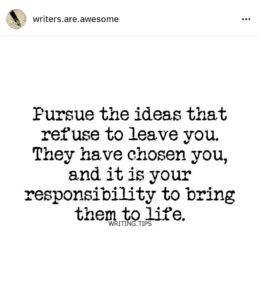Ode to Marshall Fields’ Christmases Past – Chicago

Writing is about memory, personal truth and the never-ending river of change. A recent scan of Flipboard had the following headline: Christmas at Macy’s Walnut Room. To most, this is an innocent lede about an annual holiday celebration in Chicago. To me, it is a stain on Christmases past.
Childhood Christmases are redolent of my grandmother’s cherry, almond body cream, fresh pine, and the sweets served in Marshall Field’s Walnut Room. We had a special, annual date, just us, tea at the base of the storybook Christmas tree seemingly trimmed by elves. Our trays of dainty sandwiches, shimmering sweets, and warm scones were a personal fairy tale beyond my multicultural and blue-collar neighborhood. Each sip equaled the special love we shared, each cucumber sandwich harkened the possibility of future travel and the sweets spoke of creative aspirations. One Yellow cab ride took me to a magical kingdom that Disney could never replicate. 
Fields was the place to spend tips earned from my Kresge’s lunch counter job. I saved and saved to buy a special dress for a high school dance. Fields sold me my first pair of expensive shoes as a young career woman and it became the place for my special annual Christmas date with my children who found it old fashioned. Sadly, I failed at translating the magic it held and still holds for me today.
Marshall Fields is an echo of Chicago history, a Phoenix fertilized by the ashes of a historic fire, stately on its full city block, accessorized by giant verdigris clocks, stocked with wonders including the celestial Tiffany mosaic above the grand gallery, all impressive to my young self. It continued to be magical as I returned through all phases of my womanhood. 
For me, Macy’s is New York, malls and overstocked floors more jumble than art. I can hear New Yorkers protest and rightly so because Macy’s is their memory. Macy’s acquired Fields in 2005. For months they teased the city about whether they would keep the historic name or change it to Macy’s. Chicagoans held out a helium balloon of hope that suffered a massive coronary with the name change. Is it a coincidence that I left Chicago in 2006?
What does a name change have to do with writing? Everything. It is the human condition to hunger for reconstructed memory while society strives for change. It is the meat of an idea that a writer serves as the main course of personal truth. I write about the many memories I carry of the grand emporium in my creative arsenal. It is tied to my education, my accomplishments, my hopes, my dreams, and my losses. Perhaps the writing of my memory-truth will spark a memory in you or another reader. This is why I write.

 The bright rind is a color once limited to circus clowns. The semi-sweet, juicy flesh imitates the dark pink of Blood Oranges. I stumbled upon a recipe for a Bundt-type cake that included two whole unspecified oranges. I chose the Cara Caras to adapt the cake c
The bright rind is a color once limited to circus clowns. The semi-sweet, juicy flesh imitates the dark pink of Blood Oranges. I stumbled upon a recipe for a Bundt-type cake that included two whole unspecified oranges. I chose the Cara Caras to adapt the cake c




